Adya and Otto*
*Pioneers within the avant-garde
*Pioneers within the avant-garde
This autumn, the Stedelijk Museum Schiedam presents Adya and Otto. Pioneers within the avant-garde, an exhibition about the extraordinary life and work of the artist couple Otto and Adya van Rees-Dutilh. In their early years as a young family, they were surrounded by renowned artists such as Arp, Mondriaan and Picasso. During this time they made unique contributions to iconic movements such as Dada, Cubism and the emergence of abstract art. Adya and Otto were well-known figures among connoisseurs and artists during their lifetimes. However, their work remains relatively unknown to the general public. The Stedelijk Museum Schiedam wants to pay tribute to these leading modern artists of the 20th Century. With more than 70 works from their pioneering years, this is the first time in almost half a century that Adya and Otto’s works are being showcased together on such a scale. The exhibition places a special emphasis on Adya, who as a female artist did not receive the recognition she deserves in the male-dominated art world of the 20th century

Otto van Rees, Adam and Eva, ca. 1910 © Van Rees Stichting/Pictoright
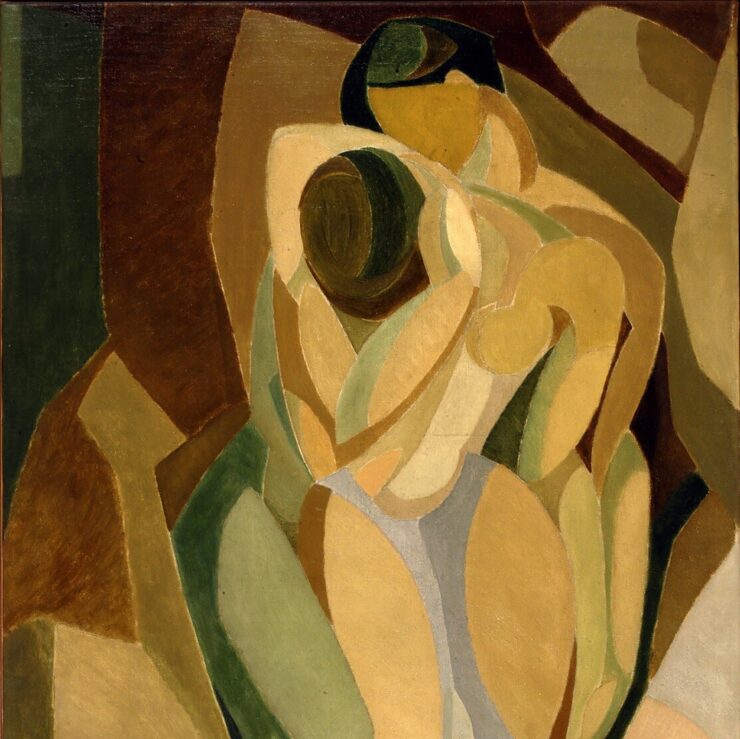
Otto van Rees, The embrace, 1911 © Van Rees Stichting/Pictoright
Adya Dutilh (1876-1959) and Otto van Rees (1884-1957) met around 1902 in Blaricum where Otto’s father founded an agricultural community. Adya was eight years older than Otto and had followed extensive drawing and painting lessons in Brussels. Otto did not finish secondary school but did take painting lessons. Following the advice of the artist Jan Toorop, Otto left for Paris in 1904, soon followed by Adya. Immersed in the international avant-garde scene, they lived in the Bateau-Lavoir studio building in Montmartre and later resided at various addresses in the artists’ district of Montparnasse.

Family Van Rees with Hans Arp, 1915 © Van Rees Stichting/Pictoright
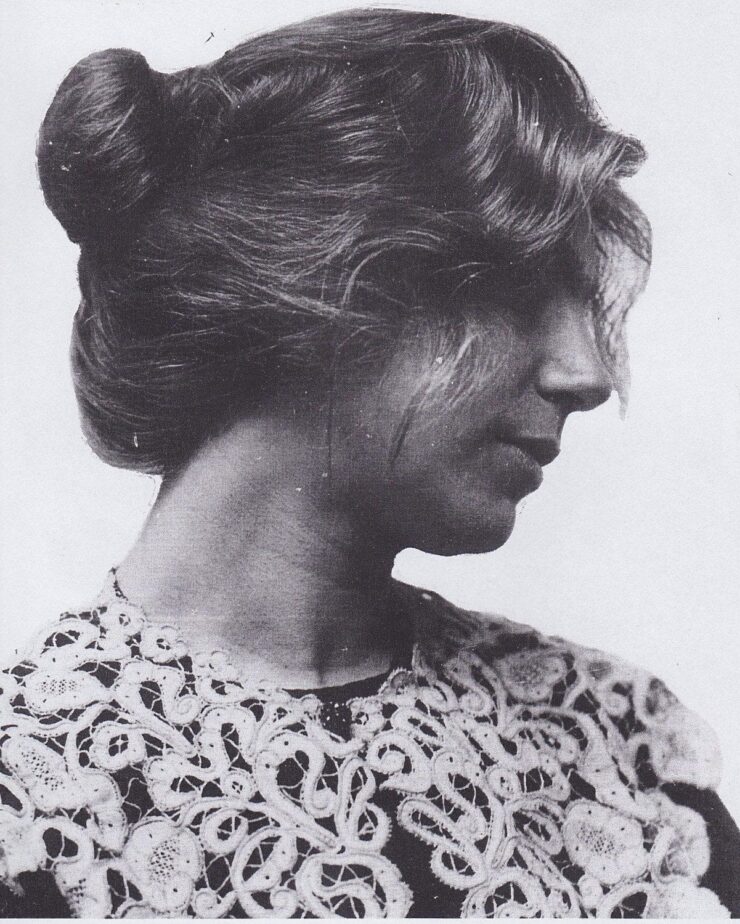
Portrait of Adya, ca. 1905 © Van Rees Stichting/Pictoright
Otto admired Adya as an artist and drew inspiration from her work, particularly her embroideries, which encouraged him to adopt a more abstract style. In 1908-1909, Otto painted in a style called cloisonnism, characterised by planes of bright colours and accentuated contours. It was in this style that he created the chic Portrait of Adya van Rees-Dutilh, the painter’s wife (1909). In addition to Adam and Eve (1910), he also painted several portraits of his wife during this period, such as Adya embroidering after giving birth (1910) and twice a Mother and child (1911). These are extraordinary works that, in very different styles, convey an impression of intimacy. The exhibition also features several of Adya’s paintings, a sketch for a needlework and several of her completed drawings. Otto’s series of cubist works featuring naked women, such as Standing Bather (1910) and , show how his style was informed by his sources of inspiration in Paris.
During their time in the French capital, Otto became friends with Georges Braque, and Pablo Picasso helped him secure a studio. The couple became part of the international community of modern art connoisseurs and artists in Paris. Otto, Adya also played an active role in maintaining contacts to publicise and sell their work. Adya was frequently portrayed, not only by her husband Otto but also by artists such as Piet Mondriaan (1912). They led a nomadic life, living in the Netherlands, Belgium, France and Switzerland, always in search of the best place to live and to find inspiration.
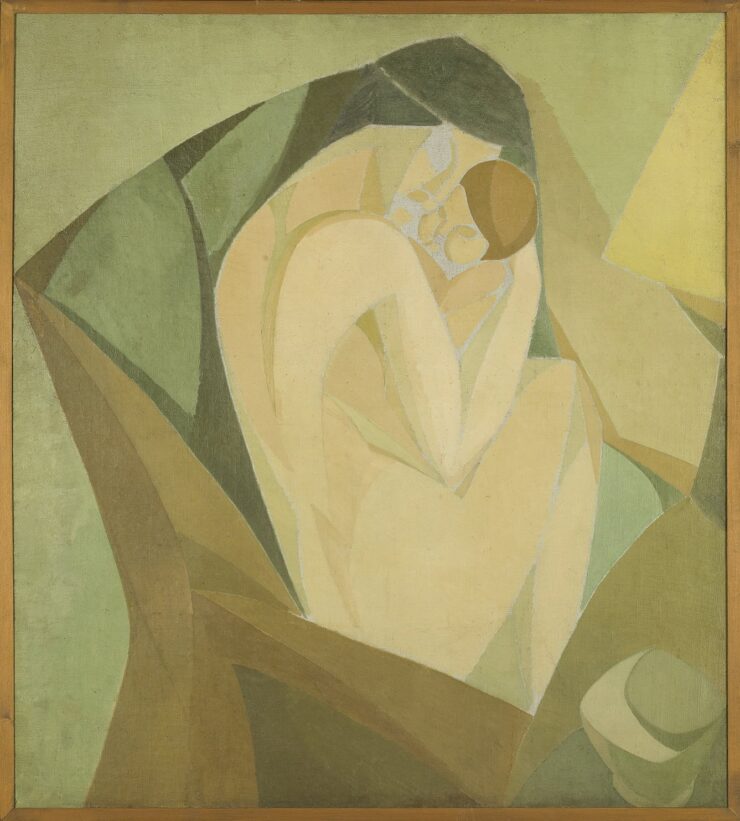
Otto van Rees, Mother and Child, 1911, from the collection of Centraal Museum Utrecht © Van Rees Stichting/Pictoright
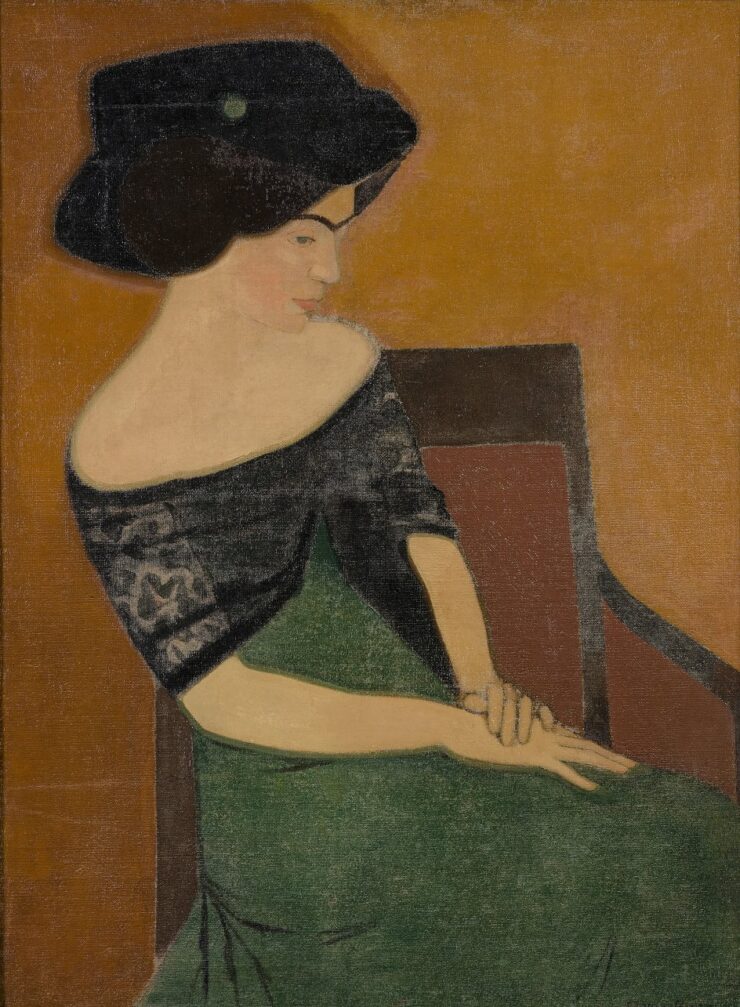
Otto van Rees, Portrait of Adya van Rees-Dutilh, the painter's wife, 1909 © Van Rees Stichting/Pictoright
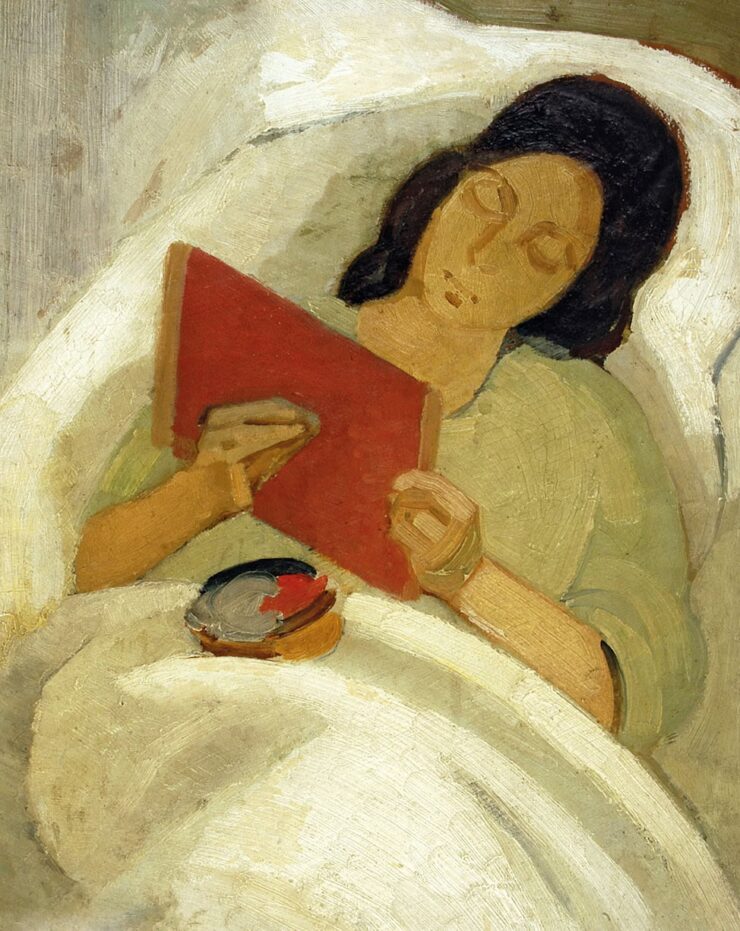
Otto van Rees, Adya embroidering after giving birth, 1910 © Van Rees Stichting/Pictoright
By 1913, Otto and Adya were gaining recognition in the art world. They each exhibited three works at the prestigious First German Autumn Salon, Der Sturm, a group exhibition of international modern artists in Berlin. Otto’s exhibited pieces included works created in sunny Fleury in 1911, such as Bathers (1911) and , while Adya showcased her needlework. In the years between 1914 and 1917, Otto, closely connected with the early Cubists in Paris, painted cubist landscapes and still lifes in the style of Picasso and Braque. The exhibition in Schiedam includes 15 of his colourful cubist works from this period, such as Composition with bottle and pipe (1914).
Adya’s work was also highly regarded. Her drawing Fantômas (1914) was reproduced on the cover of the progressive German magazine Die Aktion. Living in Switzerland in 1915, the artist couple were at the forefront of the Dada movement. In retrospect, the exhibition at Galerie Tanner in Zürich, where Otto and Adya exhibited alongside Hans Arp, is seen by other Dadaists as the original manifestation and beginning of Dada. As true Dadaists, Adya and Otto threw out all the rules of traditional art. At the Tanner exhibition, Otto showed not only paintings but also collages. The works exhibited by Adya included five wool tapestries and three silk embroideries, some of which are abstract. The unusual nature of the work – collages and abstract textile works presented as art in their own right – led to much criticism. In contrast, Adya’s embroidered tapestries and needlework artworks struck a chord with critics, particularly because of the use of colour.

Adya van Rees-Dutilh, Fantômas, 1914 © Van Rees Stichting/Pictoright

Otto van Rees, Composition with bottle and pipe, 1914 © Van Rees Stichting/Pictoright
The poster for the Tanner exhibition (1915) and a collage on a sketchbook from the same year show that Otto was sometimes ahead of his contemporaries, such as Hans Arp, who only later adopted the collage technique.
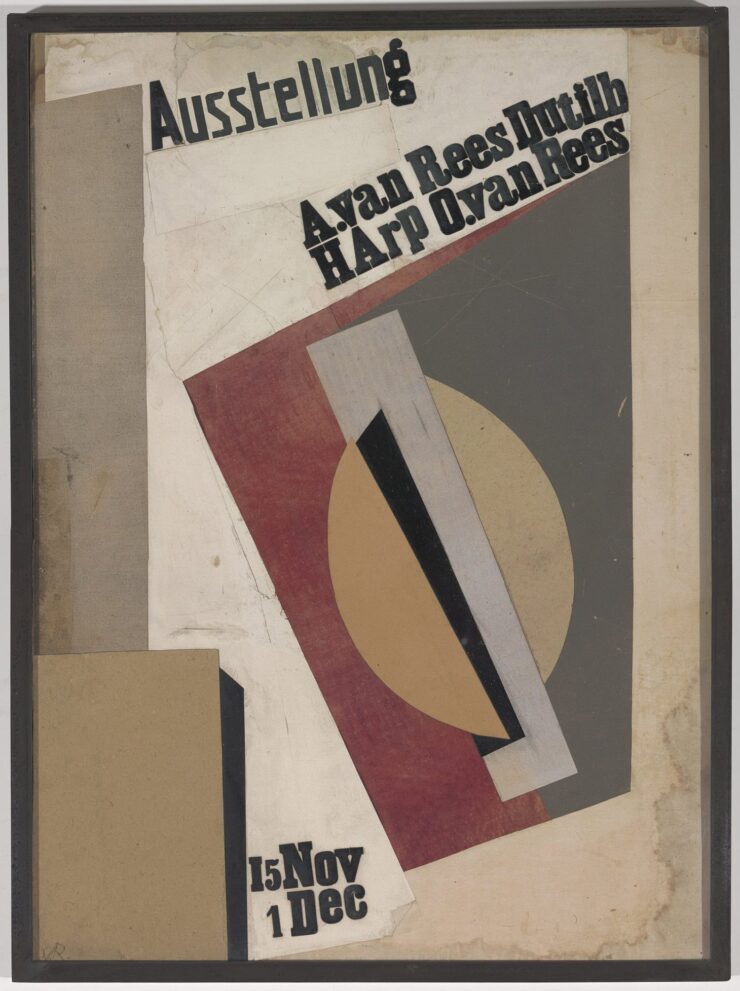
Otto van Rees, Design for the poster for the exhibition at Galerie Tanner in Zürich, by Otto and Adya van Rees and Hans Arp, 1915
The exhibition also offers a special glimpse into the couple’s private lives, which were closely intertwined with their artistic work. Like many female artists, Adya’s work remained overlooked for a long time after her death. In Adya and Otto. Pioneers within the avant-garde, over 70 works are featured, 13 of which were created by Adya. Unfortunately, her work is less well preserved and difficult to obtain on loan, partly because needlework is so fragile. The exhibition features one exceptional and cherished embroidery by Adya: Madonna and child, circa 1917. Nevertheless, the Stedelijk Museum Schiedam has deliberately chosen to present Adya and Otto as equal artists, emphasising the high esteem in which her work is held.
At a time when women were expected to stop working after marriage, she found room to develop in her relationship with Otto. She was a successful artist – an unusual achievement for her time – with her work shown in international exhibitions and featured in magazines. With the birth of their first daughter in 1906, Adya decided to concentrate on drawing and embroidery rather than painting. The use of colour in her woollen tapestries and silk embroideries was praised by critics, and Otto also lauded her artistic talent.
“You who are more talented than me, who works with more ease, with more decisiveness, with more imagination, with more study and devotion. Who was the best at the academy, who was already a painter when I was still but a child…” wrote Otto to Adya in a letter, dated 1940.
Art above all else
Their dynamic and nomadic artistic life came to an abrupt end shortly after the First World War. In 1919, their eldest daughter, aged 13, was killed in a train accident. Otto was also seriously injured and required a long convalescence. They had to return to the Netherlands. Nevertheless, their home in Deurne once again became a meeting place for artists and innovators. Artist friends such as Ossip Zadkine regularly visited their house in Brabant. The exhibition features several posters and wood carvings by both Adya and Otto from the 1920s.
Abstract art by women in the collection of Stedelijk Museum Schiedam
Alongside the work of Adya and Otto van Rees, Stedelijk Museum Schiedam presents a selection of abstract art by four generations of female artists from the museum collection. Post-war abstract art is often seen as a real ‘male movement’. However, the opposite is true. Various female artists left their mark on innovations in art in their time. The oldest generation is represented by Lou Loeber, born in 1894. The youngest by Machteld Rullens (1988) and Elsemarijn Bruys (1989), whose works have recently been purchased for the collection. With this, Stedelijk Museum Schiedam pays tribute to these women and hopes to perpetuate their place in art history.
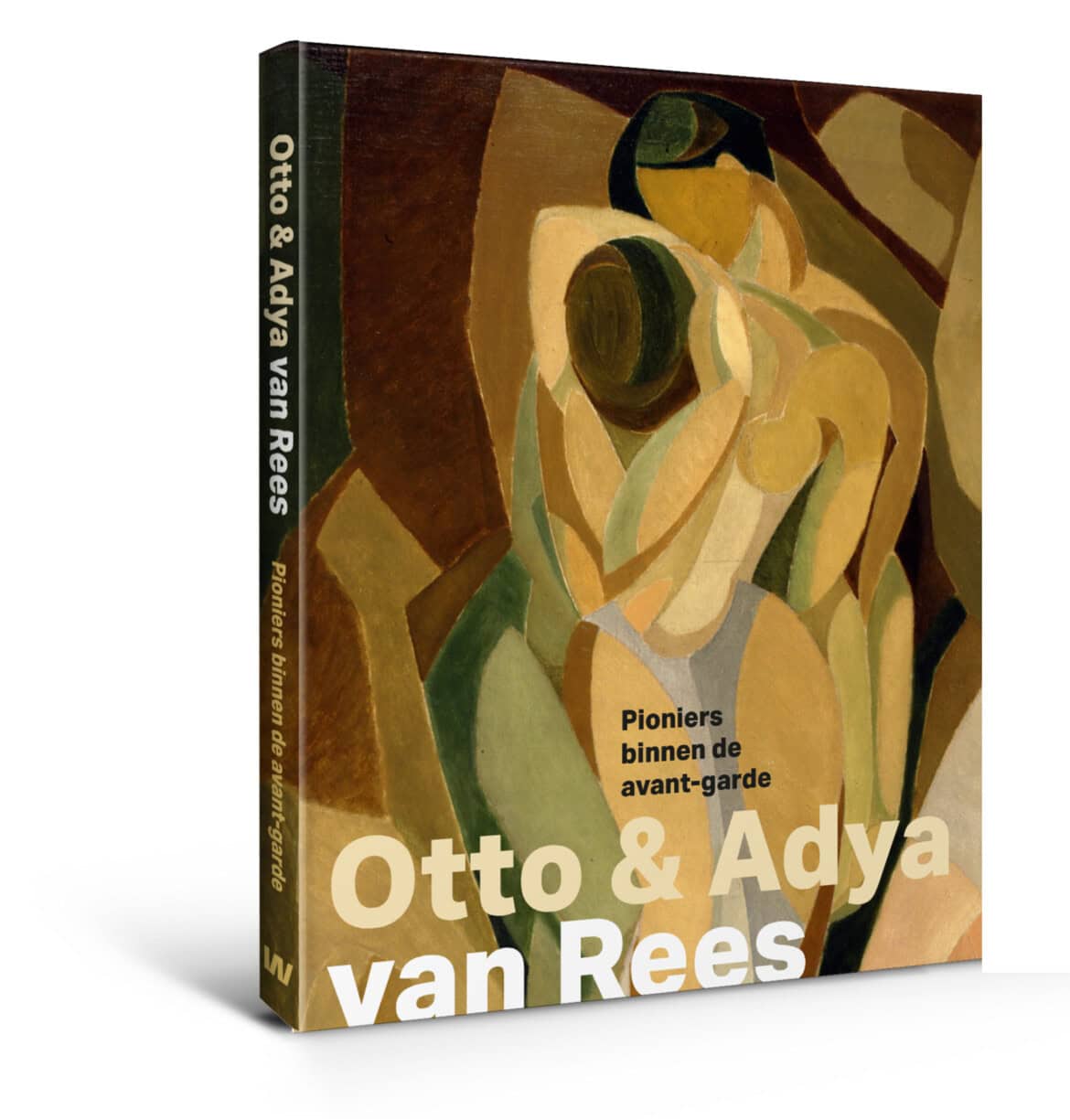
To coincide with the exhibition, a publication of the name, Otto & Adya van Rees. Pioneers within the avant-garde, written by author Irène Lesparre, will also be released. This is an initiative of the Van Rees Foundation in collaboration with Waanders Publishers. The book focuses on the period during which both Otto’s and Adya’s work underwent dynamic development towards abstraction, influenced by cloisonnism, cubism and dada. It also highlights the reactions to their work by critics, audiences and fellow artists, providing a comprehensive view of their pioneering position in the art world.
The exhibition is being compiled by guest curator Marguerite Tuijn in collaboration with the Van Rees Foundation and with the support of Irène Lesparre, a member of the Foundation’s board and an expert on Van Rees. The exhibition features loans from the Centraal Museum in Utrecht, the Kunstmuseum in The Hague, the Kröller-Müller Museum in Otterlo and numerous private collections in the Netherlands, Belgium and Switzerland.